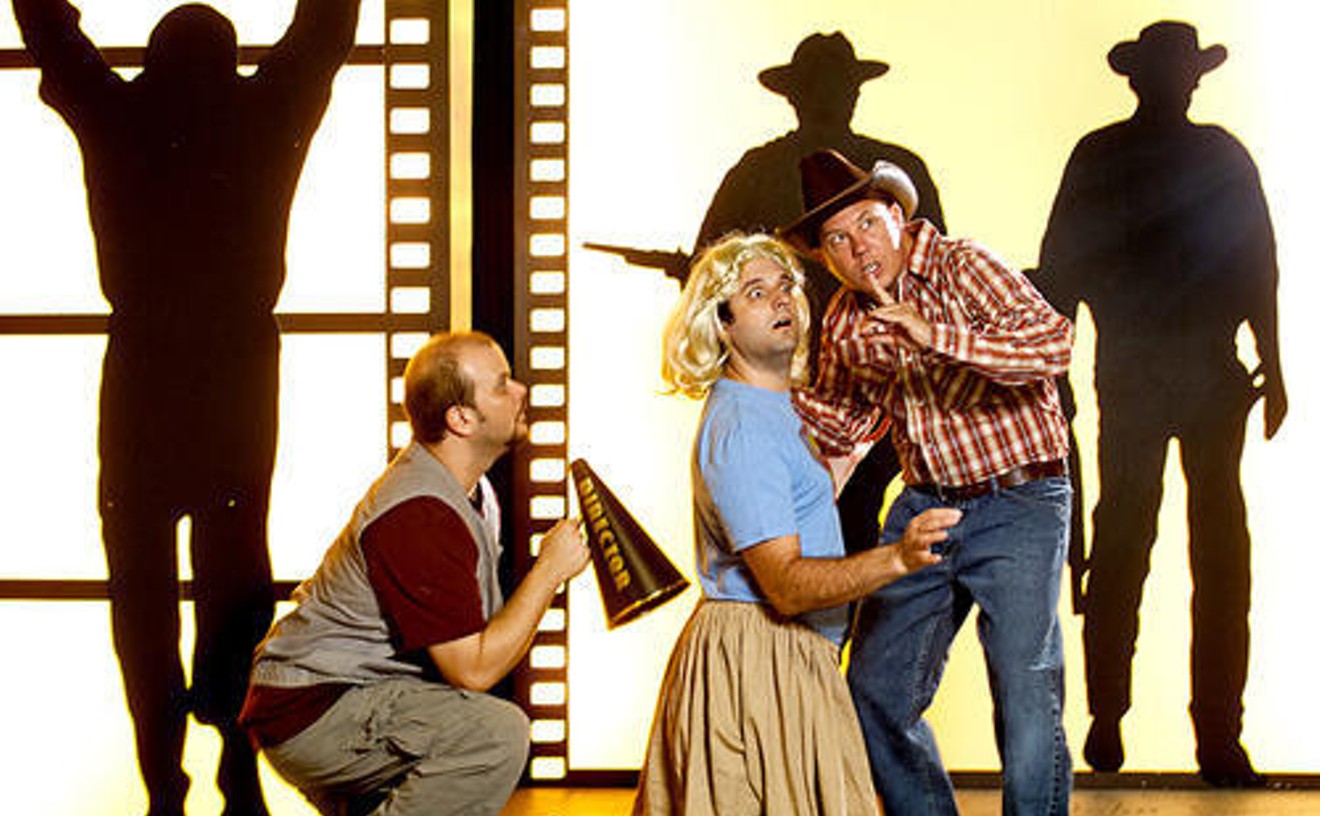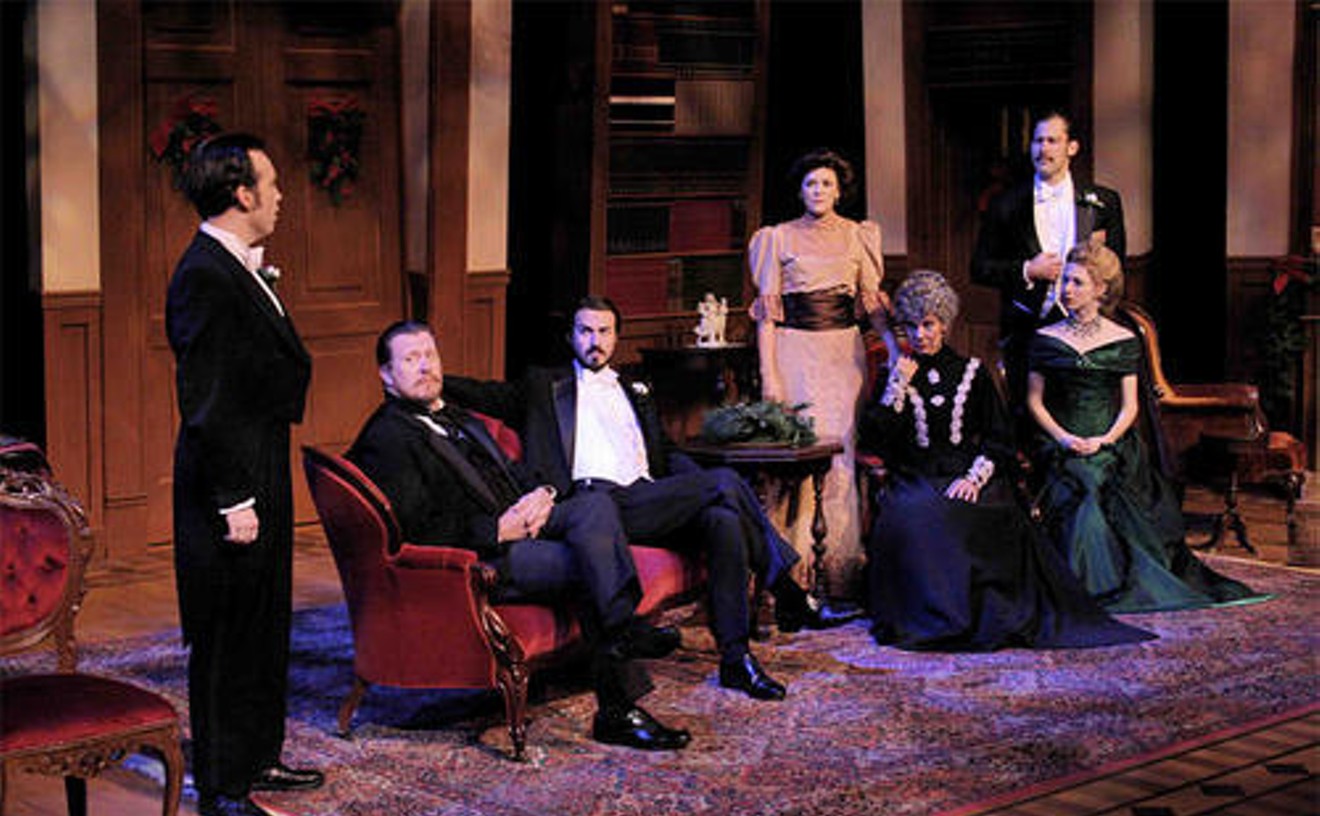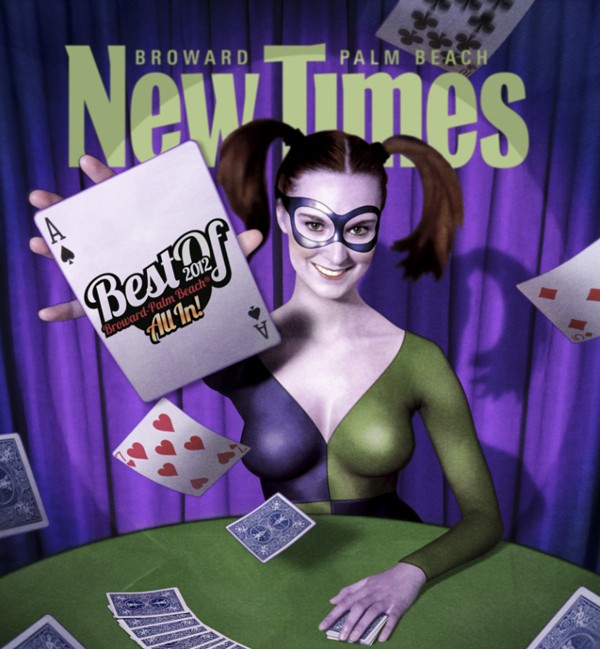Sometimes the best shows sneak up on you, registering only faintly while you're still in the museum or gallery and then later coming together in your head as a cohesive whole. The Boca Museum's 60th-annual "All Florida" was such a show. First there's the scale of the exhibition to consider: 101 artists represented, out of the nearly 600 who submitted close to 2,000 works. That juror Valerie Ann Leeds — a veteran of the Orlando, Tampa, and Whitney museums — managed to make sense of it at all is no small wonder. Leeds, however, not only culled judiciously; she also found a common thread running through so much diverse work, in the form of what might be called "the Florida experience," or, as she memorably put it, "a collective response to the environment and the bounty of natural resources found within Florida's borders." By taking the "All Florida" designation seriously, she assembled a show that somehow encompassed the Sunshine State's past, present, and future.
Best Group Exhibition
"All Florida Juried Competition and Exhibition"
Best Photography Exhibition
"Artist Unknown/The Free World"

In 1955, photographer and curator Edward Steichen organized more than 500 images into "The Family of Man," which traveled to 37 countries and reached about 10 million people. In 2008, New York-based teacher and photographer Oliver Wasow and South Carolina painter John D. Monteith began assembling a collection of "found" or vernacular photography that now includes roughly 20,000 pictures. The sampling of their vast archive that was on display at Hollywood's Art and Culture Center represents a world in which an estimated 750 million people upload and share something like 100 million photos on their Facebook pages daily. What a difference half a century or so makes. The point of Wasow and Monteith's enterprise is that we are bombarded by so much imagery on a continuing basis that it's almost impossible to keep track of it, much less make sense of it. And yet they take on the daunting challenge of doing so, combing the internet for photographs — portraiture, mostly — that, taken together, form their own variation on "The Family of Man," one that speaks volumes about life in that long-ago time, the 20th Century.
- 1650 Harrison St., Hollywood, 33020 Map
- 954-921-3274
- www.artandculturecenter.org
Best Actress
Deborah L. Sherman

When casting like this falls into your lap, it's a gift. Deborah L. Sherman has said she has a history of mental illness in her family, including bipolar disorder, which undoubtedly helped her absorb the dangerous mood swings of Melinda, the bipolar wife of a pandering politician in Side Effects. Whether she was slinking about their immaculate living room with misplaced carnality, making surreptitious phone calls to a former lover, or using black humor as a defense mechanism, Sherman's Melinda was a fragile creature, uncomfortable in her own skin, her own home, her own marriage. The actress remained always a paragon of subtlety, never overplaying her character's emotional extremities. When she exuded, finally, a sense of self-actualized confidence after the disintegration of the marriage, it's like we were watching another person altogether — not exactly cured but visibly healthier. Sherman portrayed both Melindas with unflinching accuracy.
- 12200 W. Broward Blvd., Plantation, 33325 Map
- 954-577-8243
- www.mosaictheatre.com
Best Actor
Todd Allen Durkin

Six Years was one of the more underrated productions of the past year, especially for the colossal performance of Todd Allen Durkin. He essentially carried the entire play on his shoulders, discovering a complete spectrum of human emotion in an otherwise imperfect postwar panorama. Many months later, it's difficult to recall the goings-on in Six Years, which followed the tumultuous marriage of two people, in six-year increments, from the end of World War II to Vietnam. But Durkin's individual actions remain vivid, lodged in permanent residency in memory: his shell-shocked eyes staring with zombified vacancy at the motel interior in front of him; his jolting eruptions of anger over such inconsequential subjects as neckties and the volume of music; his shattering, tear-stained breakdown on a business trip. This was Durkin's debut performance at the Caldwell; here's hoping there are many more to come.
- 7901 N. Federal Highway, Boca Raton, 33487 Map
- 561-241-7432
- www.caldwelltheatre.com
Best Supporting Actor
Alex Alvarez

Alvarez is onstage only for a few minutes in each of the two scenes in The Unseen, but he dominates — nay, towers over — both of them like a mad, yet-to-be-deposed dictator. As a secret prison's brutal guard with a heart of... something, he hulks back and forth between two crude cells, and you can't take your eyes off him: a blocky refrigerator of intimidation, shaking the rafters with brutal curses that sound as if it's the first time we've ever heard these words. In Alvarez's grungy toolbox, they have a gripping power that puts most of David Mamet's artful profaners to shame. When he speaks, we all listen, even if we don't want to, as with his squeamish description of the murder of an inmate by removing his eyes and tongue, single-handedly. He still manages to make us laugh, uttering some of the funniest exclamations in this dark comedy; but if you saw this, chances are you slept with one eye open that night.
- 3301 College Ave., Davie, 33314 Map
- 954-262-5730
Best Supporting Actress
Laura Turnbull

Laura Turnbull's Marie Lombardi was a grounding force, the ego that kept a raging id in check. She was wife to Ray Abruzzo's larger-than-life title character in Mosaic's winning drama. And while Abruzzo's performance was all jazz, flash, and volume, Turnbull had an arguably greater challenge: to remain compelling while keeping everything low key. In a convincing wig and period clothes, Turnbull completed her transformation into the self-sacrificing Marie Lombardi with the utmost authenticity, transcending a role that could have been swallowed up if performed by a lesser talent. She expressed pain, anger, melancholy acceptance, wry humor, and even control over her relationship with Vince. She operated mostly under the surface, conveying her truest emotions through her movements and expressions as much as her words. And it's worth mentioning that she maintained her character's particular accent from beginning to end, which can't be said for a handful of our great actors.
- 12200 W. Broward Blvd., Plantation, 33325 Map
- 954-577-8243
- www.mosaictheatre.com
Best Ensemble Cast
All My Sons
Palm Beach Dramaworks' first production in the Don and Ann Brown Theatre proved to be an embarrassment of riches — an opening salvo that turned a corner in the company's history. No more was Dramaworks limited to cramped sets with small casts. To wit, this ambitious 1947 drama by Arthur Miller featured an ensemble of 11 actors from South Florida and beyond. Kenneth Tigar and Elizabeth Dimon did the heaviest lifting as the leaders of an emotionally shattered family, with Jim Ballard pouring out his soul as its only living son. The remaining members of the cast — neighbors and relatives of the central three characters — did their best to ensure that each of their personalities shone through, no matter how small their roles. With today's justifiable concerns over budgets and funding, no modern playwright would even script parts for half of the cast of All My Sons, which lives out of abundance.
- 201 Clematis St., West Palm Beach, 33401 Map
- 561-514-4042
- www.palmbeachdramaworks.org
Best Set Design
Stuff

The set design in the first act of this elaborate comedic drama about the proto-pack-rats Homer and Langley Collyer is impressive enough, a stately Brooklyn mansion oozing wealth and containing the subtlest, earliest signs of hoarderdom. By the time you return to your seat after an unusually lengthy intermission, you witness an epic transformation that looks like it was an art project months in the making. The act takes place nearly two decades later, and instead of anachronistic opulence, the Collyer abode is a nightmare of domestic debris: Filthy newspapers stacked to the heavens, broken lamps scattered about, furniture completely inaccessible. The clutter is convincing, the detritus staggering, the result almost magical. Michael McKeever, Nicholas Richberg, and Marckenson Charles do a fine job of performing in a claustrophobic space in front of this display, but the set was the show.
- 7901 N. Federal Highway, Boca Raton, 33487 Map
- 561-241-7432
- www.caldwelltheatre.com
Best Director
Nicole Stodard
At one point during Cleansed, I felt like throwing up, and I almost had to look away. If this feeling swelled up in my throat while watching, say, a Neil Simon comedy, then the direction that inspired it would be considered rather poor. But in a play by Sarah Kane, the late British chronicler of life's most sordid and deviant alleyways, nausea is a compliment. For the record, the sickening scene in question was the one in which Jim Gibbons tosses down an entire box of chocolates, piece by piece, for Robert Alter to eat like a tortured, subservient pet, only to upchuck them onto the dirty floor in a mass of half-digested chocolate. It's one of the tamer scenes in a play full of all sorts of boundary-pushing degradation. But by wallowing in the X-rated material, it's easy to overlook the beautiful subtleties of Stodard's direction. The resources at Empire Stage, her company's host venue, are more limited than any other theater space, prompting Stodard to generate a lot from very little: Rubber dismembered body parts, strips of red ribbons to indicate blood, creepy sound design, a minimal set that exudes existential despair, pitch-perfect song transitions from Metallica and Joy Division. She helmed a difficult play, making it impossible to forget.
- 1140 N. Flagler Dr., Fort Lauderdale, 33304 Map
- 954-678-1496
- www.empirestage.com
Best Play
Side Effects

This past year saw Herculean achievements in set design, sound design, costume design, prop-heavy novelties, and large-cast spectacles. But none of them topped the simply staged Side Effects and the emotional, comedic, and dramatic magic it created with two people, a single set, and a narrative that explores mental illness in a modern marriage with profound insight. Universally, it was a play about the difficulty and fragility of relationships; specifically, it was about bipolar disorder and politics and the effect both have on human connection and disconnection. Playwright Michael Weller is one of the most talented writers in the country, and he couldn't have asked for a better director than Richard Jay Simon, who guided Deborah L. Sherman to the best performance of her career and Jim Ballard to one of three solid performances in his banner 2011 year. When everything comes together this well, a show like Side Effects raises the standards for every production around it.
- 12200 W. Broward Blvd., Plantation, 33325 Map
- 954-577-8243
- www.mosaictheatre.com






